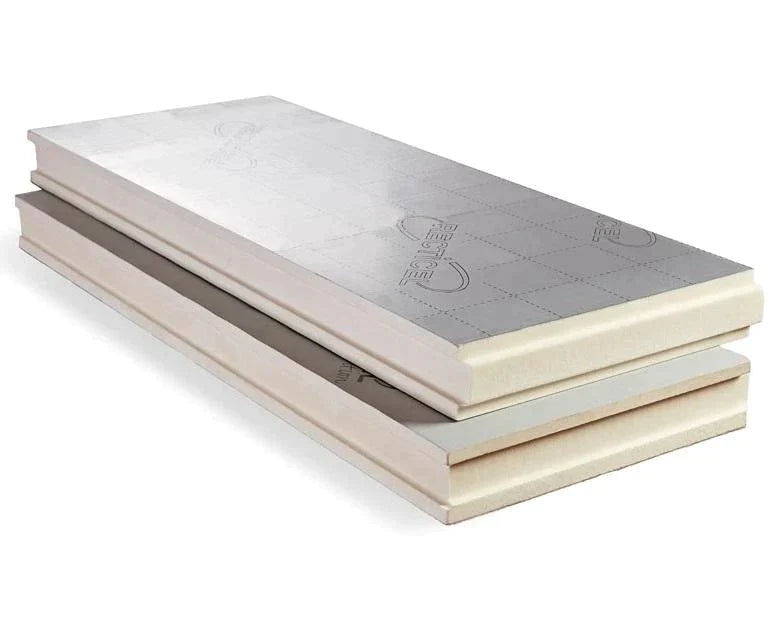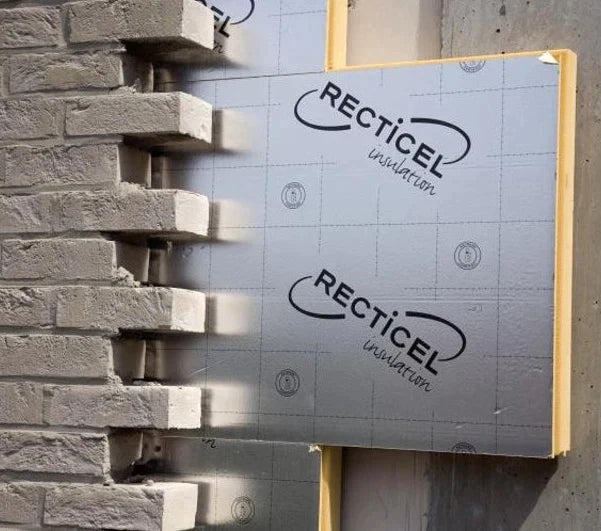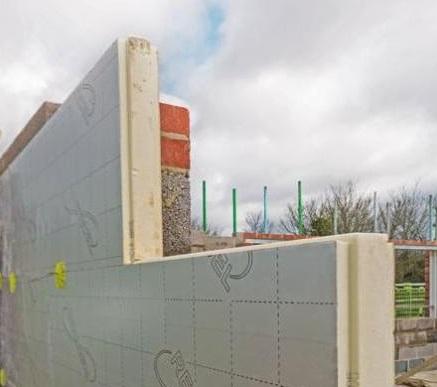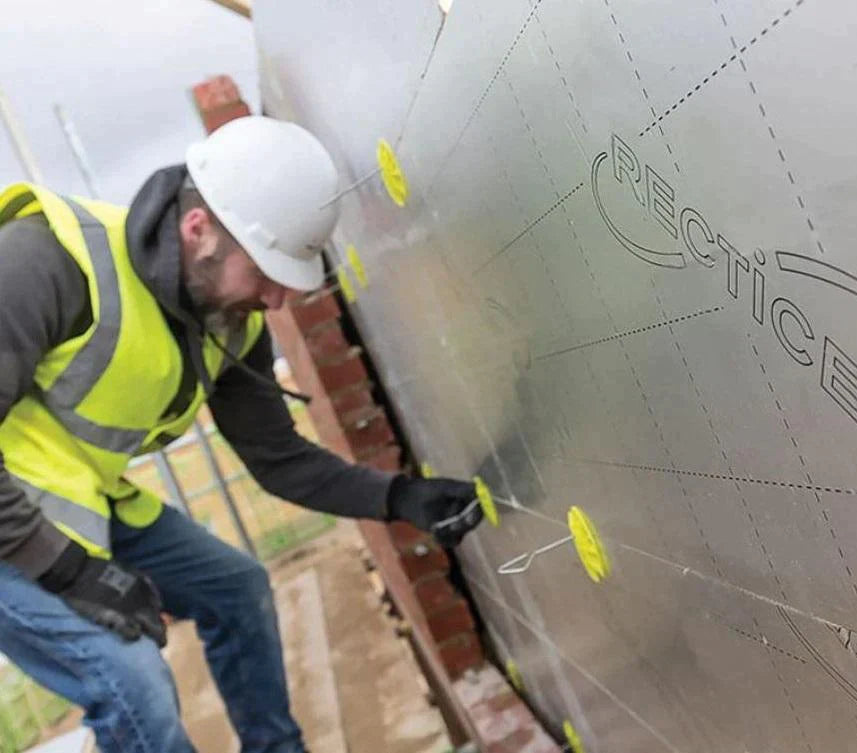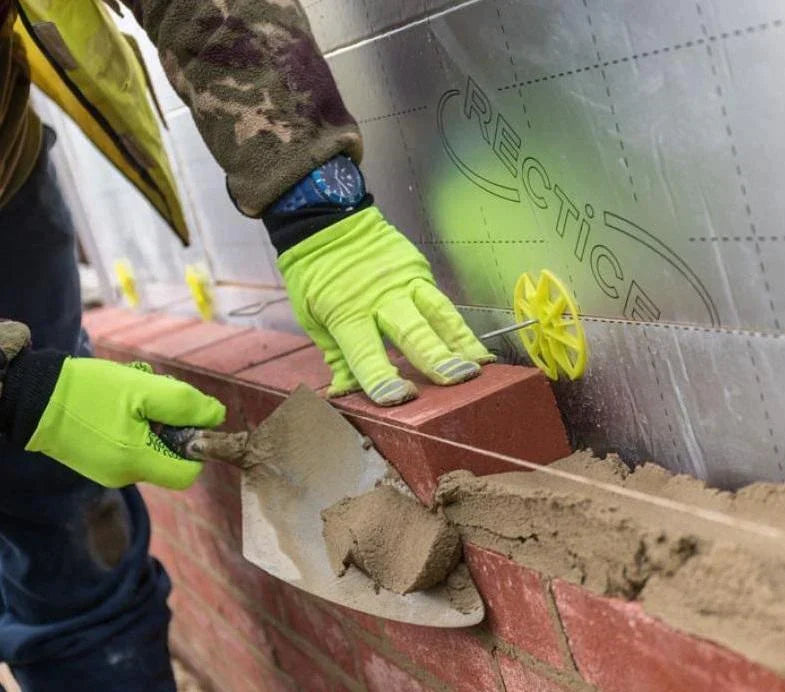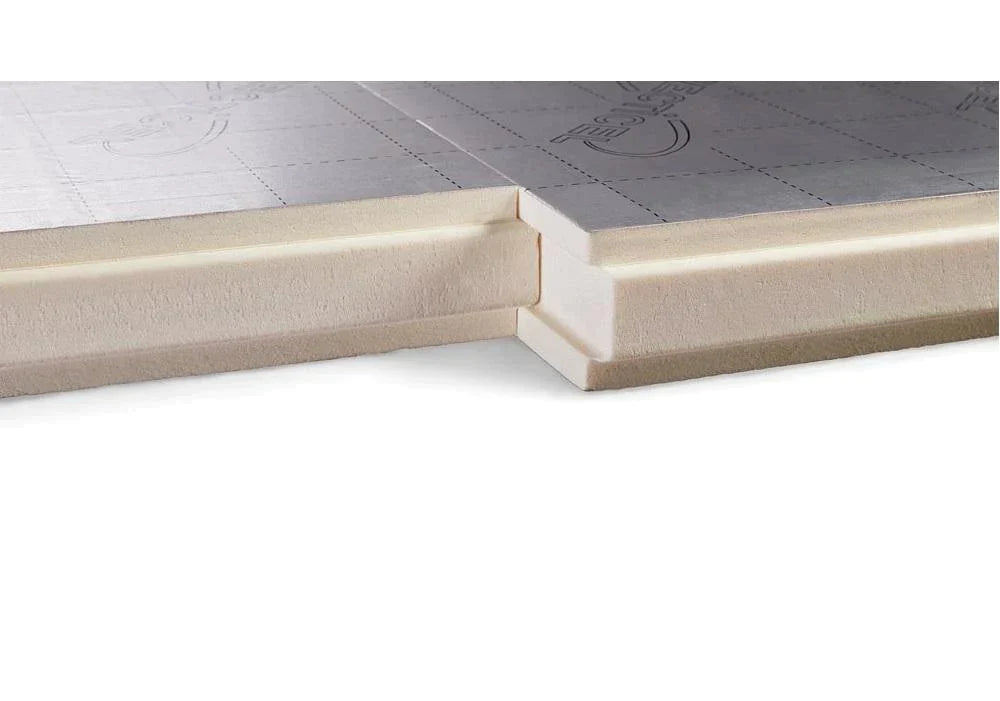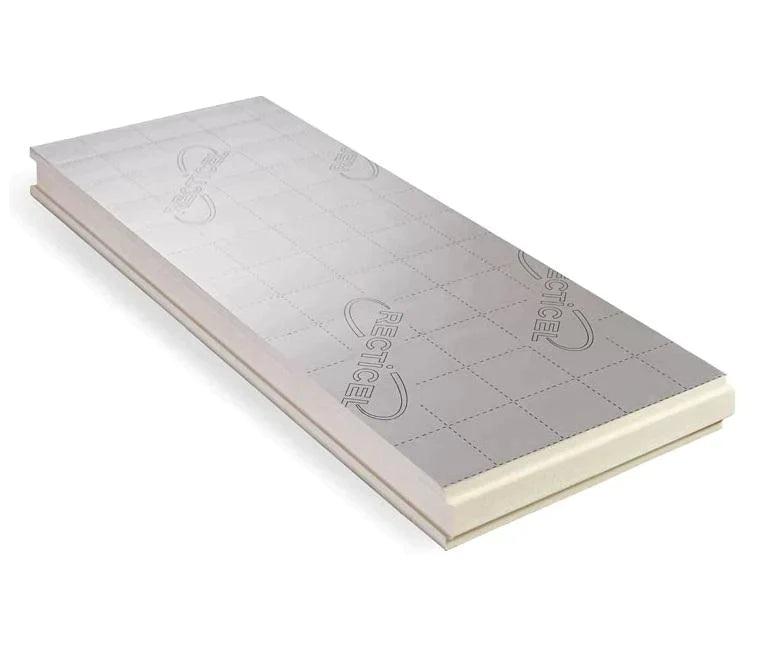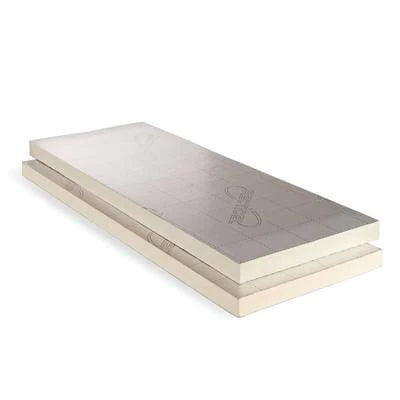140mm Recticel Eurowall Plus Full Fill Cavity Insulation Board - 6 Boards
140mm Recticel Eurowall Plus Full Fill Cavity Insulation Board - 6 Boards is backordered and will ship as soon as it is back in stock.
140mm Recticel Eurowall® + is a premium, high performance full fill insulation board with precision cut tongue and groove joints on all four sides. This ensures that the boards lock tightly together minimising heat loss through thermal bridging. This unique joint offers increased protection against wind driven rain as well as improved wind tightness. Eurowall® + is also designed with a 10mm cavity requirement in mind, so that space can be left for conventional bricklaying techniques.
- Good thermal performance: λ = 0.022 W/mK
- Tongue and groove joints on all 4 sides - easy and fast installation
- Can help to achieve 0.18 U-value in 100mm cavities
- Tongue and groove rebate minimises thermal bridging
- Fire performance: Class 1 (BS 476, Part 7)
- Moisture tolerant
- 1200mm x 460mm max including tongue and groove joint
- 1190mm x 450mm installed dimensions
| Thickness: | 140 mm |
| Length: | 1200 mm |
| Width: | 460 mm |
| No. Boards: | 6 |
| Coverage: | 3.3 m² |
| R-value *: | 6.35 m²K/W |
| Thermal conductivity: | 0.022 W/mK |
| Certification: | BBA Certified (BBA certification 02/3908) |
* The R-value denotes the resistance to heat flow – the higher the R-value the more insulating the product is.
-
Size
-
Coverage (m²)
-
Thickness
-
Material
Large Order or Specific Requirement?
CALL OUR TEAM
0115 6976 800

